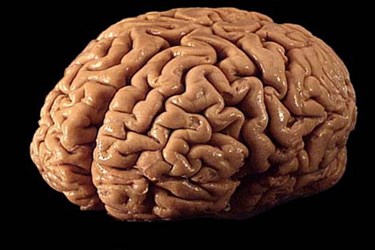The Deadliest Contaminant: Solving The Brain-Eating Amoeba
By
Kevin Westerling
@KevinOnWater
As Halloween approaches and our TV screens fill with frights of all kinds, water managers have a real-life monster to worry about — a parasite (Naegleria fowleri) that’s been dubbed the “brain-eating amoeba.” The scary-sounding name is hardly unfounded considering the role of N. fowleri in causing primary amoebic meningoencephalitis (PAM), a brain disease that is nearly always fatal. Although PAM is still uncommon, recent news and developments are more concerning than comforting.
The parasite itself has been in the news for some time, and the takeaway from those stories has essentially been “don’t shoot water up your nose,” which is the amoeba’s pathway to the brain, or play in suspect waters. N. fowleri is very common in the environment, especially in warm waters, but apparently does not cause harm to those who ingest it. However, a new peer-reviewed research article from Journal AWWA notes that “the most recent cases in Karachi, Pakistan, have no connection to ritual nasal cleansing or any recreational water exposure.” The paper also calls N. fowleri “an emerging pathogen in U.S. water supplies” as it details ways in which to treat and control it.
Meanwhile, a recent press release published by St. John the Baptist Parish in Louisiana lists the following as precautions for consumers:
- DO NOT allow water to go up your nose or sniff water into your nose when bathing, showering, washing your face, or swimming in small hard plastic/blow-up pools.
- DO NOT jump into or put your head under bathing water (bathtubs, small hard plastic/blow-up pools) — walk or lower yourself in.
- DO NOT allow children to play unsupervised with hoses or sprinklers, as they may accidentally squirt water up their nose.
Don’t sniff while showering? Don’t jump into the pool? Have you checked the children? This is scary stuff!
Granted, utilities should always do their best to protect the public, so erring on the side of safety is a responsible tactic. The notice was published by WVUE New Orleans after the Louisiana Department of Health and Hospitals detected N. fowleri in the parish’s distribution system, and is only applicable to water customers in communities where the pathogen has been detected.
Louisiana is one of 18 U.S. states that have had at least one case of PAM from 1962 to 2012 (see Figure 1 below), with 132 total U.S. cases reported by the Centers for Disease Control and Prevention (CDC) between ’62 and 2013.

If it is an “emerging” pathogen — a notion further supported by its inclusion on the U.S. EPA’s third Contaminant Candidate List (CCL 3) — how are utilities dealing with it?
“Few laboratories in the United States or worldwide are experienced with this organism,” states the Journal AWWA article. The most common methods for detection, largely developed in Australia, are sampling strategies, via membrane filtration or by centrifugation, followed by lab analysis.
Samples can be taken from surface waters, or (alarmingly) by scraping biofilm samples from pipes and plumbing fixtures. Though chemical disinfection is effective at removing N. fowleri, the utility has less and less control at the ends of the distribution system, i.e., the consumers’ homes.
Yes, the “brain-eating amoeba” has been found on showerheads, sink drains, and water heaters — thriving at temperatures between 25 and 42 degrees C, but also able to withstand winters and regrow as it gets warmer (note the incidence in Minnesota in Figure 1).
The likelihood of occurrence on plumbing appurtenances is one of the “knowledge gaps” cited by authors Timothy Bartrand, Jonathan Causey, and Jennifer Clancy in their review for AWWA of the existing research. The knowledge gaps cited on the treatment and distribution side include the following:
- Occurrence surveys for N. fowleri in different drinking water systems from source through treatment and distribution to better understand the ecology and dynamics in distribution systems;
- Long-term source water monitoring for N. fowleri conducted for the source water of one or more vulnerable plants;
- Challenge studies for cyst removal in filtration processes in pilot plants;
- Inactivation data (chemical disinfectants and UV) for cysts in water drawn from full-scale plants after treatment but before primary disinfection;
- Data to allow estimation of the contamination of distribution system water with N. fowleri during maintenance, main breaks, and other disturbances in distribution;
- Extension of research to premise plumbing; and
- Studies on the impact of different disinfectants on N. fowleri in biofilms. Impacts could include inactivation of the N. fowleri or reduction of bacterial cells (substrate) and limitation of growth. Studies would include the impact of intermittent free chlorination (chlorine burns) on biofilms and the N. fowleri within them.
(Source: “Naegleria fowleri: An emerging drinking water pathogen”)
While the monster amoeba’s victims have thus far been few and far between, it is worthy of attention due to its menacing, deadly nature (akin to the Ebola virus). Now it’s up to the science community, water treatment professionals, and public utilities to ascertain and minimize the threat with the best practices and technologies available.
Halloween, brain-eating amoebae, Ebola — these are indeed scary times … but no time to panic.
Image credit: "human brain," ajeofj3 © 2011, used under an Attribution-ShareAlike 2.0 Generic license: https://creativecommons.org/licenses/by-sa/2.0/
Copyright © 1996 - 2014, VertMarkets, Inc. All rights reserved. To subscribe or visit go to: http://www.wateronline.com
http://www.wateronline.com/doc/the-deadliest-contaminant-solving-the-brain-eating-amoeba-0001
